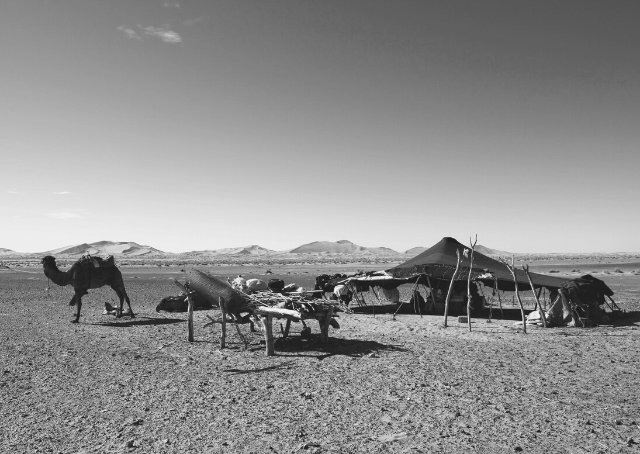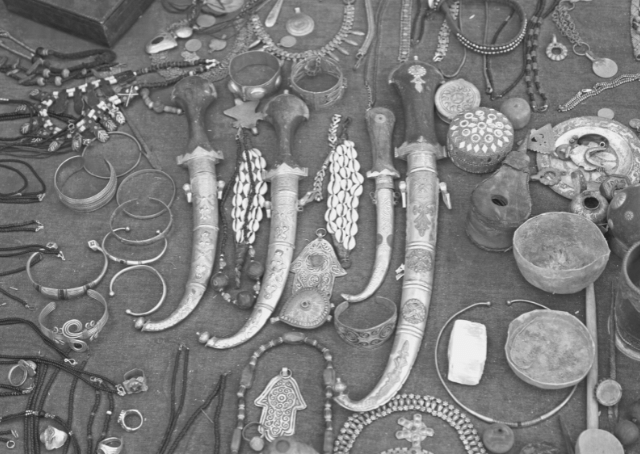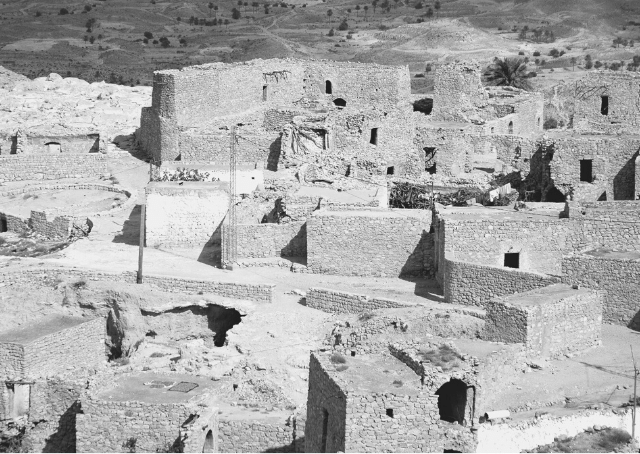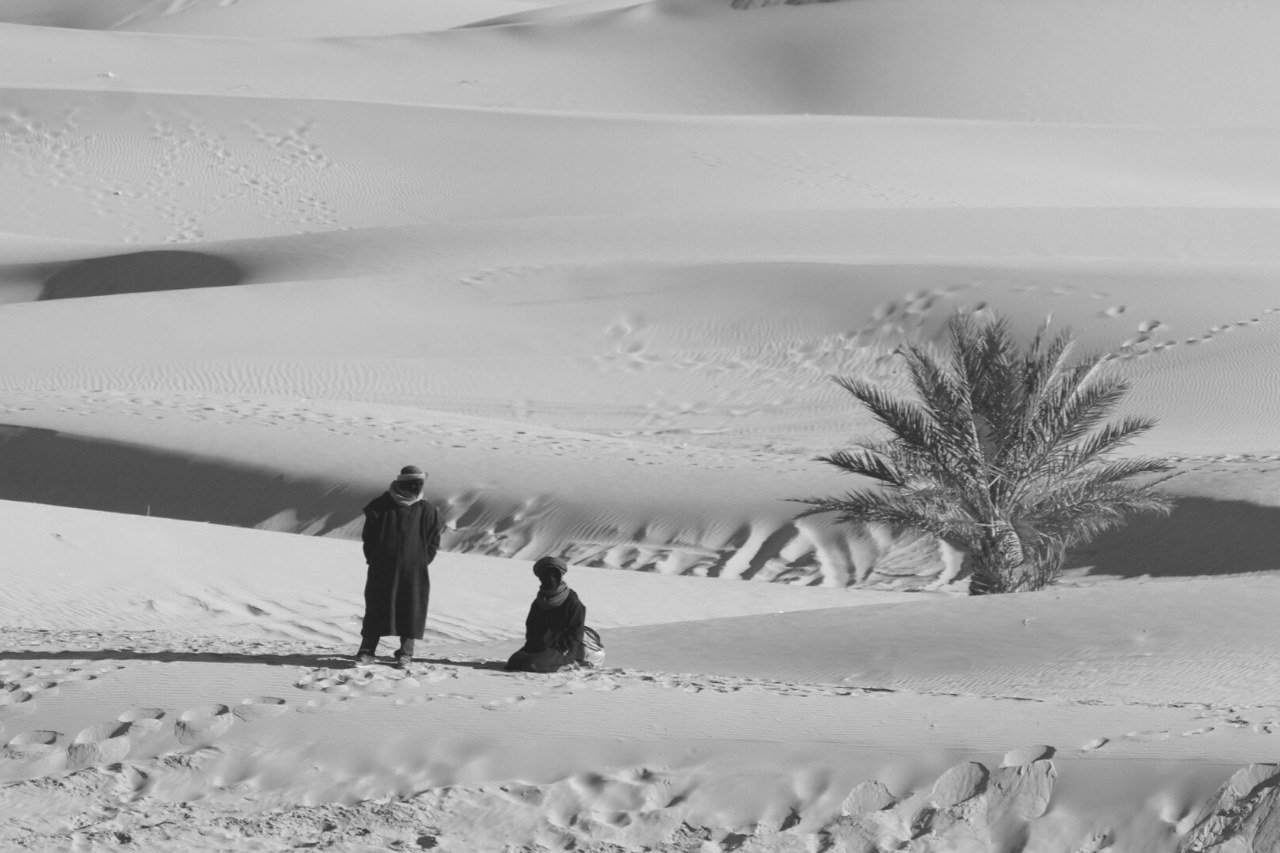Berber People: The Natives of North Africa
The Berber people have inhabited North Africa for centuries and survived years of assimilation, persecution, and invasion.
Though Berber culture began to decline during the Arab conquests of North Africa during the Middle Ages, a synthesis of Arabic-Berber culture is still alive in countries like Morocco and Algeria today.
In this article, we will explore the rich history and culture of the Berbers of North Africa.
Who Are the Berbers?
The Berber ethnicity is classified as the descendants of North Africans who populated the region before Arabs conquered it. You can find Berber communities today in Morocco, Algeria, Tunisia, Libya, Egypt, Mali, Niger, and Mauritania.
The two largest Berber populations are located in Algeria and Morocco. Much of the population descends from Berbers in these two countries, but only a minority consider themselves Amazigh Berbers. An estimated one-quarter of the Algerian population and three-fifths of the Moroccan population is Berber.
The Berbers predominantly speak the Amazigh language (also called the Tamazight language) that belongs to the Afro-Asiatic language family.
The name Berber comes from the Greek word for Barbarian, a name given to many peoples outside of Greece, including the Germanic and Celtic tribes of Europe. The Byzantines, Greeks, and Romans all referred to the peoples of North Africa as Berbers.
Other scholars argue that during the 7th century A.D., the Arabs gave the original Berber people their formal name. The Berber soldiers hired by the Arabs for their conquest of Iberia were given the name “Barbar,” a race descended from Noah in religious scripture.
The Arabs quickly spread Islam throughout the Berbers of North Africa, and the religion became a central part of many of their communities.
History of the Berbers: Early History
The traditional Berber people have inhabited the Maghreb of Northwest Africa since at least 10,000 B.C. Numerous cave paintings have been found in Algeria and Libya that date back to 6000 B.C. These tribes largely relied on agriculture and animal domestication.
From the year 2000 B.C. on, the Berber languages spread westward from the Nile River Valley, and by the year 1000 B.C., the Berber languages dominated North Africa. Before the Romans took over the region, many independent states existed, including the Numidians under King Masinissa located near Carthage, the Mauri in Mauritania, and the Gaetulians.
History of the Berbers: Carthage
Carthage, which was created by Phoenician settlers, gradually increased its influence across central North Africa throughout the 4th century B.C. and came to be the dominating power not only of North Africa but also the dominating navy of the Western Mediterranean Sea.
Carthage’s rule in North Africa brought many harsh realities to the Berber people. As Carthage began to control the socioeconomic environment of the region, Berbers were increasingly subjugated to poor treatment as workers and were forced to pay excessive tributes to Carthage.
The Berber tribes of the region saw the Carthaginians as an increasing threat, and numerous revolts broke out against Carthaginian control. A massive rebellion of 200,000 Berbers broke out in 396 B.C. but was soon dissolved due to a lack of organization.
The Berbers reluctantly accepted the Carthaginian presence in the region, but the two cultures stayed largely separated, as Berbers became the lower socioeconomic classes of Carthaginian society. However, the Berbers eventually showed their usefulness as warriors, and Carthaginian armies began fielding Berber-Numidian cavalry in battle.
Though Berbers increasingly made a presence in the Carthaginian army, the Berbers were wholly capable of switching sides according to their interests. When Agathocles led Sicilian Greek troops to Cape Bon to attack Carthage, many Berber warriors under Allymas joined Greece.
Berber tribes played a major role in the Punic Wars, which revolved around a power struggle to control the Mediterranean region between Rome and Carthage. In the Second Punic War, King Massinissa of Numidia sided with Carthage and led his Berber forces in many battles against Roman allies but eventually switched sides to Rome during the final years of the conflict. The Berbers played a significant role in the Battle of Zama, which forced Carthage to surrender and dissolved its entire military.
King Massinissa took advantage of the peace treaty of the Second Punic War, which stipulated that Carthage had to dissolve its military and not involve itself in any other military conflicts.
King Massinissa began taking Carthaginian land, as Carthage was not only unable to defend itself, but any attempt to do so could result in a Roman declaration of war due to a breach of the peace treaty. Carthage appealed to Rome for help, but the Senate refused to send any military assistance to its former enemy.
Rome saw the opportunity in a Roman-Berber alliance and began to form relationships with many Berber tribes. Rome knew that allying with the Berber tribes of North Africa, who for years were subjugated to Carthaginian rule, would greatly assist in destroying Carthage.
Despite the dissolution of Carthage’s entire military following the Second Punic War, many members of the Roman Senate sought to destroy the city to prevent it from rebounding and exacting revenge in the future.
When Masinissa sent his forces to take the Carthaginian city of Oroscopa, the city’s defenders repelled the attack. Rome declared war on Carthage soon after, starting the Third Punic War.
History of the Berbers: Roman Era
The Berber kingdoms of Mauritania and Numidia were formally brought into the Roman Empire in the 2nd century B.C. after Carthage was destroyed during the conclusion of the Third Punic War. After Carthaginian dominance was eradicated from North Africa, Berber influence in the region grew greatly under Roman control.
Cyrenaica, a Berber region in modern-day eastern Libya, became the most prominent center for Christianity in North Africa. The kingdom of Mauretania, located in modern-day Morocco and Algeria, flourished as a Roman province during this period as well.
The Garamantes of modern-day southern Libya emerged as one of the most prominent agrarian societies of the African continent. Despite their location in the Saharan Desert, the Garamantes used extensive irrigation systems to create flourishing, densely populated cities. Many historians cite the Garamantes as the first large urban society located in a desert that did not depend on a large river system.
History of the Berbers: The Arabization of North Africa
Before the Islamic conquests of the region, Berber traders dominated the Sahara. The trading of gold and slaves throughout North Africa brought immense prosperity to the Berber people.
However, the Islamic Arabic conquest of North Africa began to replace the Berber dominance in the region with Arabization gradually. By the 11th century, Arabic nomads began to dominate the desert, and many Berber tribes were forced to take refuge in the mountain outskirts of North African society.
The prominence of written Arabic led to the decline of the native Amazigh Berber written language. As Arabs gradually took over North Africa from the Berbers, native Berber identities were gradually lost and replaced by significant Islamic Arab influences.
However, throughout the 11th to 14th centuries, Berber tribespeople who embraced conservative Islam began to take power in the region and contributed to a hybrid mixture of Arab and Berber cultures spread throughout North Africa.
History of the Berbers: Berber Dynasties of the Middle Ages
The Zirid Dynasty was the first Muslim Berber dynasty to control North Africa, controlling everything from Morocco to Western Libya during its height of power. The Zirids rose to power in the region, first in the mountainous coastal regions of Algeria, and steadily began to spread their territory throughout North Africa.
After declaring independence from the Fatimid Dynasty located in Cairo, Egyptian troops were sent to North Africa, and constant warfare spun the region into turmoil throughout the mid-11th century. Despite this turmoil, the Zirids were able to exist in a weakened state as a coastal society but were eventually destroyed by Sicilian Normans in 1148.
The Almoravid and Almohad dynasties rose in the Maghreb between the 11th and 13th centuries and would become the two greatest Berber empires of North Africa. Both came to power as “protectors of Islam,” criticizing their predecessors for being too relaxed with the adherence to pure Islam throughout their territory.
The Almoravid Dynasty was largely birthed by Berber Sanhaja tribesmen who were inspired by Sufi and Maliki Islam to bring a purer form of the religion to the Maghreb. By 1040 the Almoravids captured the city of Marrakesh in Morocco and made it the capital city of the dynasty.
Throughout the next two decades, the Almoravid army steadily expanded throughout the region, eventually controlling Morocco, Mauritania, and Algeria. Almoravid armies also moved into Iberia but were forced to relinquish all of their Iberian territories by 1145 due to internal rebellion and Christian victories.
The region enjoyed great prosperity under the control of the Almoravids, as Marrakesh became the dominant trade center for the region. The city became a prominent location on Saharan trade routes and became a center for Berber Islamic culture. Under control of the Almoravids, the region of Al-Andalus on the Iberian Peninsula prospered as the most prominent region of Muslim Europe.
The Almohad Dynasty began as a religious movement in the Atlas Mountains of Morocco. These Berber tribesmen rallied behind Ibn Tumart, who proclaimed himself the divine Mahdi and criticized the Almoravids as heretical to Islam. The Almohads successfully took Marrakesh in 1147 and took over the Almoravid territory in the Maghreb.
Compared to the Almoravids, the Almohad regime was especially brutal to non-Muslims and those they believed were still loyal to the Almoravids. Many massacres and acts of persecution were carried out throughout the region by the Almohad regime.
The Almohads also made incursions into Iberia. But like the Almoravids before them were forced to retreat due to internal unrest and Christian victories. The Almohad dynasty gradually began to decay as rebellions fractured the empire. The Almohad Dynasty finally came to an end in 1269 with the loss of Marrakesh to the Zenata Marinids.
The Marinid, Hafsid, Ziyanid, and Wattasid dynasties divided up territory in North Africa after the fall of the Almohads. It greatly contributed to the survival of Berber culture in the region. These Berber dynasties lasted into the 16th century when the Ottoman Empire took over much of North Africa.
Berbers at the Turn of the 20th century
At the start of the 20th century, Berber communities were largely isolated enclaves sprinkled throughout North Africa. Moroccan Berber communities were found in the Rif, Atlas, Anti-Atlas, and Saharan mountain ranges. Berber communities also populated the Drâa valley in Southern Morocco. In eastern Algeria, communities were found near the Aurès and Kabylie Mountains.
In Tripolitania and Tunisia, Berber communities were found in the hilled regions of the Nafūsah Plateau and on the Mediterranean island of Jerba. Berber communities were found extensively in the M’zab valley in the northern Sahara and the southern and central Sahara in the Ahaggar mountains.
These Berbers were largely farmers and pastoralists. Many of these communities specialized in crafts and other trading goods, including pottery, weaving, and leatherwork. Many were also nomads that roamed the trade networks of the Sahara.
At the start of the 20th century, Berbers primarily lived in poverty in caves, tents, and pitched-roof houses. Berber women would congregate at community fountains or tombs of a saint, while men would go to local mosques for daily prayer. Many Berber communities gave enormous power to the women, as they were often the ones who chose their partner for marriage.
However, throughout the urbanization of the region during the 20th-century Berber people increasingly moved from their mountainous enclaves to cities throughout Northwest Africa in search of economic opportunity. This brought many forms of popular culture into Berber society as Berbers returned to their native communities from urban centers.
As countries throughout North Africa gained independence throughout the 20th century, Berber nationalism showed itself in many African independence movements. While many of these newly independent governments hoped to rally their people under national unity, many Berbers sought to separate their cultural identity from Arab states. Because of this, many new governments felt threatened by the Berbers and made concerted efforts to keep them in the periphery of Arab society.
The French used the Berbers to dethrone the sultan of Morocco in 1953, and some Berber officers were involved in an assassination plot on the king in 1971. This caused both the Moroccan and Algerian governments to repress the teaching of the Berber culture throughout the late 20th century.
In 1980 the decision of the Algerian government to cancel a Berber poetry lecture at the University of Tizi-Ouzou given by the Beber writer Mouloud Mammeri started the “Berber Spring,” where Berber artists and musicians led mass demonstrations. In April, the University of Tizi-Ouzou was taken over and occupied by demonstrators.
The Algerian military was called in and arrested hundreds of students for the protests. This provoked further unrest amongst university students throughout the Kabyle region, which would continue until the detained protestors were officially released in June.
Libyan Berbers played a decisive role in the 2011 Libyan Civil War, fighting a guerilla war against Gaddafi loyalists in the Nafusa Mountains. Gaddafi had historically condemned and persecuted the Berber population of the country, going to great effort to erase traces of Amazigh culture from Libyan society. This included renaming landmarks on official maps that were named after the Berber language.
Revival of Berber Culture
In recent years many of these governments, especially in Northwest Africa, began to embrace Berber society. The native Amazigh, or Tamazight, language has been increasingly studied through Algeria and Morocco.
While Berber Algerians have not been able to create a strong presence in the country’s democratic system, Berbers in Morocco have seen greater progress in creating a presence in modern North African society. The Royal Institute of Amazigh Culture was founded in 2001 located in the capital city of Rabat, where it contributes to the distribution of Berber culture throughout the country.
Tamazight is taught in many Moroccan schools, and in 2011, Tamazight was acknowledged as an official language by the Moroccan government. Berber culture has solidified its place in the Moroccan tourist industry, especially in the Atlas Mountains.
Conclusion
We have covered many aspects of the Berber people and their fascinating culture.
Let’s review the main ideas:
Berbers comprise the descendants of North Africans before the Arab conquests of the 7th to 11th centuries.
The Berbers have historically spoken the Amazigh language, but this was gradually replaced by the Arabic language.
During the Middle Ages, Berbers were increasingly pushed into the mountainous regions on the periphery of North African society.
Berbers increasingly adopted Islam as their religion, and many Islamic Berber dynasties came to power in the region. The most prominent Berber dynasties were the Almohads and Almoravids, who both sought to spread conservative Islam throughout Northwest Africa.
Berber culture has been resurgent throughout the Maghreb in the 21st century, especially in Morocco.
While some may still view the Berbers as outcasts of Arab society, today’s Berber culture is still alive and well in Morocco and elsewhere in North Africa.














